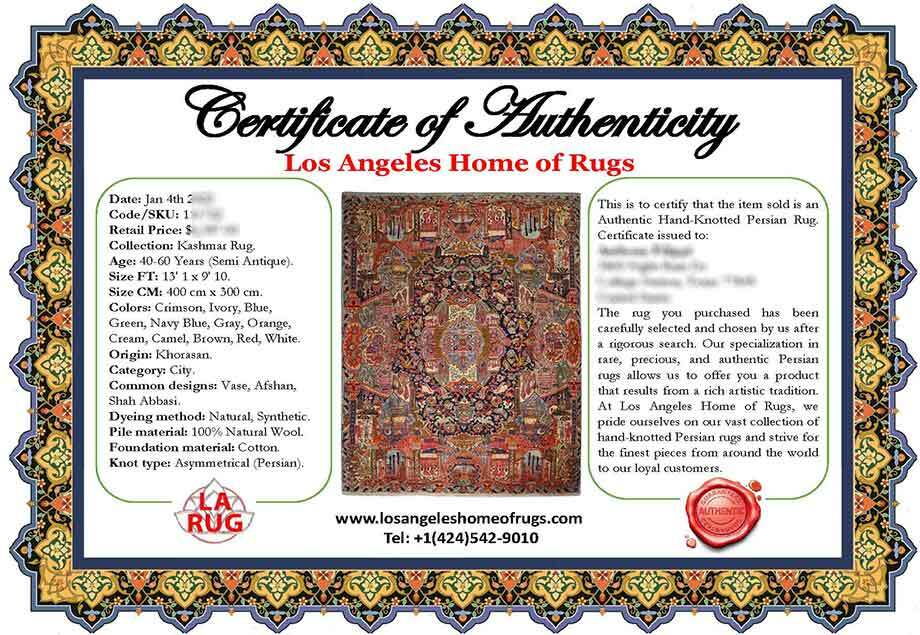Frequently Asked Questions: Selling Antique Rugs or Carpets in Auctions
When is the best time to sell an antique rug or carpet?
Exceptional old rugs, carpets, and textiles are in demand throughout the year. During auctions, collectors, academics, museum curators, and new buyers assemble to purchase fine carpets and rugs. Auctions of rugs and carpets take place throughout the year in New York as part of Americana, English Furniture, French Furniture, and Continental Furniture sales. In London, rugs and carpets are included in English Furniture, Continental Furniture, and House Sales. There is no better time to consign your antique rug or carpet with auctions.
Why are antique carpets and rugs highly collectible?
Enthusiasts and connoisseurs buy and sell rare and important rugs and carpets because they are exquisitely designed and constructed, and because each piece is one of a kind. Exquisite carpets of fine workmanship are the masterpieces of a fast-vanishing industry where the supply of these treasures is as limited and rare as any other historical artifact we preserve in museums. When you are ready to sell a handmade, hand-dyed antique carpet or rug, auctions can help you realize the highest price.
How much does an appraisal of my antique rug cost?
Because this category is quite diverse, many types of old rugs and carpets are in demand. Auctions typically offer free preliminary appraisals through online submission forms, where you can provide detailed information and photographs of your rug. For more comprehensive appraisals, there may be a fee involved, which will be communicated to you by the auction house.
What types of rugs and carpets are in demand at auctions?
Vintage rugs, antique carpets, runners, Kilim rugs, tribal carpets, long runners, town rugs, village rugs, Tabriz rugs, fragments, or textiles made of silk, wool, metal-thread, or hand-dyed are all in demand. Specific examples include hand-woven Kashan rugs or pairs of Isfahan rugs from Central Persia, Teheran carpets from North Persia, Qazvin carpets or Saber Mashad carpets from Northeast Persia, Kirman carpets or Afshar rugs from Southeast Persia, Zieglar Mahal carpets, and Bijar or Sarouk Farahan rugs from Northwest Persia.
How do I ensure the highest possible price for my antique Persian rug at auction?
Selling your antique Persian rug through auctions ensures you receive the highest possible price for your valuable textile, thanks to their expertise, marketing reach, and reputation in the auction world. By following the steps outlined below, you can navigate the process smoothly and confidently:
1- Research and Identify Your Rug:
Understand the origin, age, and unique characteristics of your Persian rug. Gather any documentation or provenance information that can verify its authenticity and history.
2- Get a Professional Appraisal:
Seek a professional appraisal to determine the value of your rug. Many auctions offer appraisal services and can provide preliminary estimates through their online submission form.
3- Submit Your Rug for Auction:
Contact the auction house and provide detailed information about your rug, including high-quality photographs, dimensions, and any existing appraisals or certificates of authenticity.
4- Agree on Terms and Conditions:
Once accepted, you will need to agree on the terms and conditions of the sale, including the reserve price, auction date, and commission rate.
5- Prepare Your Rug for Sale:
Ensure your rug is clean and in good condition. Professional cleaning and minor repairs can enhance its appearance and value. Provide all relevant documentation, including provenance and certificates of authenticity.
6- Promote Your Rug:
The auction house will handle the marketing and promotion of your rug. Ensure they provide high-quality photographs and detailed descriptions to attract maximum interest.
7- Attend the Auction:
If possible, attend the auction to observe the bidding process and final sale price of your rug. If you cannot attend in person, auction houses offer online bidding and real-time viewing options.
8- Complete the Sale:
After the auction, the auction house will notify you of the final sale price and handle the payment process. You will receive the proceeds (minus the auction house's commission) within a specified period.
9- Consider Future Sales:
If you have more antique rugs or other valuable items to sell, use the knowledge and experience gained from this auction to inform future sales.













